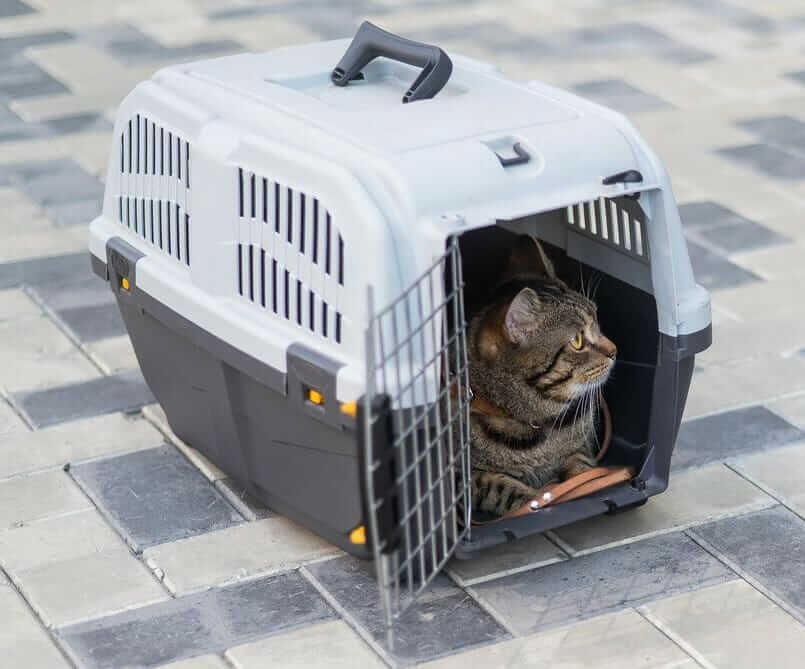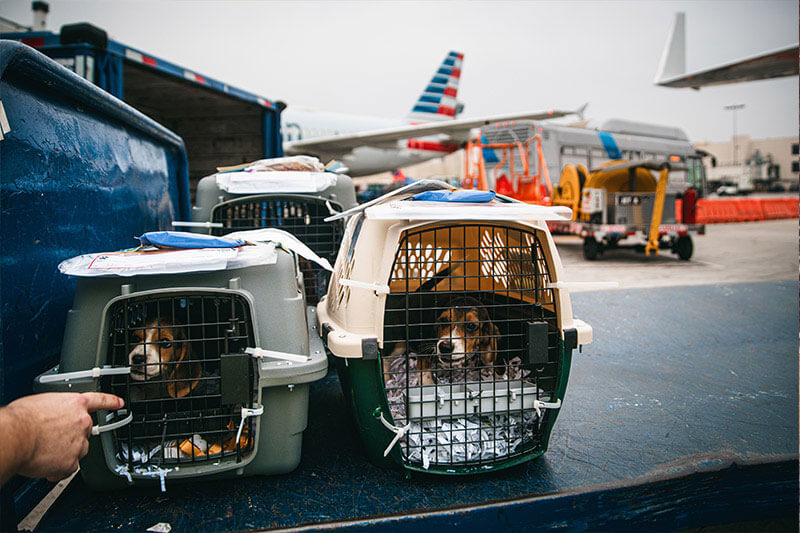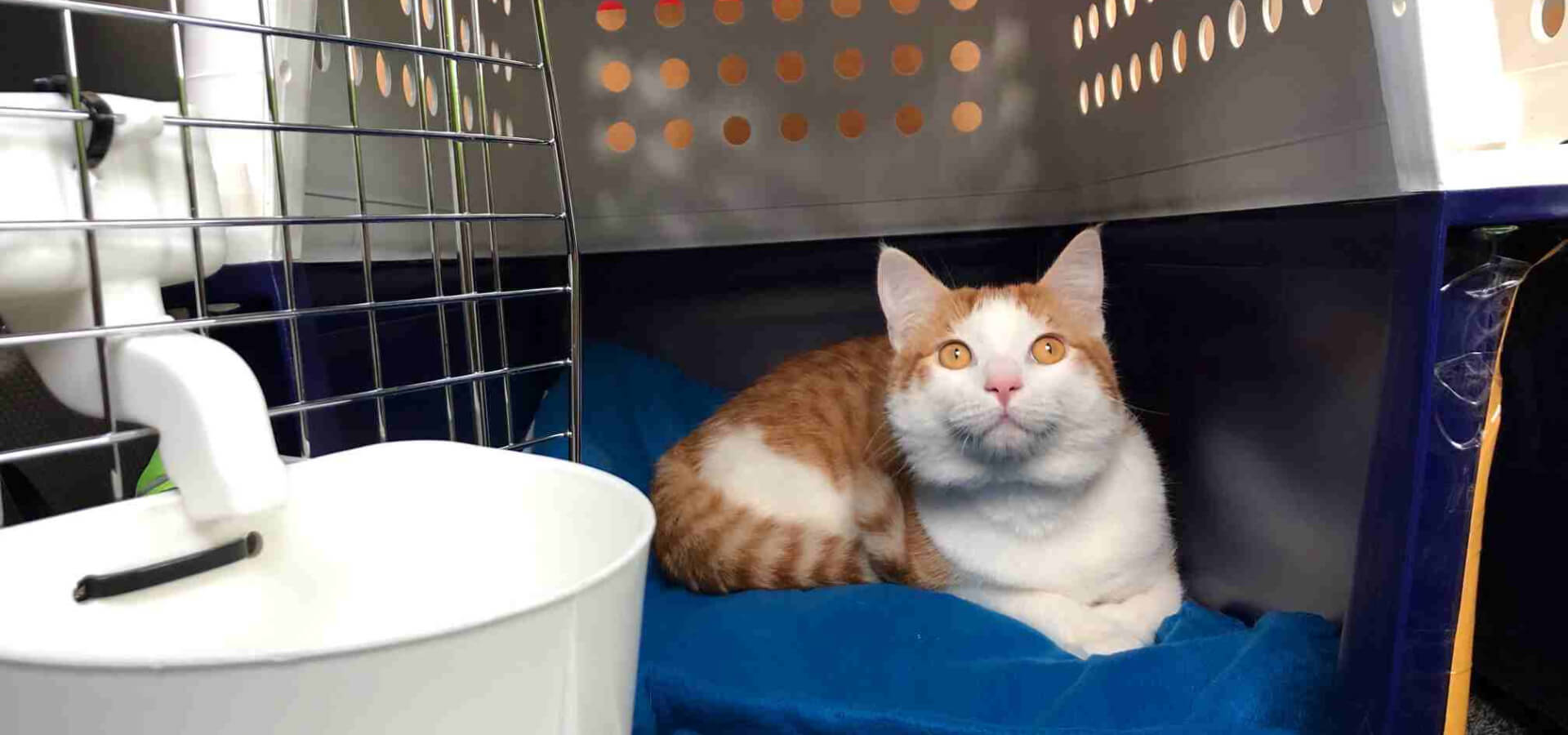Ensuring Safe Travel for Your Pets
Transporting pets, especially across borders, is a delicate process that requires careful planning to ensure their safety and comfort. Whether you’re moving, going on vacation, or need to ship a pet, each animal has specific needs and regulations that must be met.
From dogs and cats to reptiles, every type of pet requires different considerations when traveling. Understanding these needs and international laws can help make the journey smoother for both you and your furry or scaly friend. Let’s dive into what’s involved in safely transporting your pets, with specific tips for dogs, cats, and reptiles.


Logistics Ground ( Dogs )
When it comes to transporting dogs, proper planning is essential to ensure their comfort and safety during the journey. International travel, in particular, requires meeting specific regulations to prevent the spread of diseases and ensure the health of your dog.
Key Considerations for Dog Transport:
-
-
Health and Vaccinations: Before traveling, your dog must be up-to-date with essential vaccinations, including rabies, which is a key requirement for international transport. Most countries require dogs to have a valid rabies vaccination certificate issued within 12 months of travel.
-
Microchip Identification: Many countries mandate that dogs be microchipped before entering. The microchip should be implanted before the rabies vaccination to ensure it is properly linked to the vaccination records.
-
International Pet Travel Laws: Each country has its own rules regarding pet importation. For example, the United States has stringent regulations from the Centers for Disease Control and Prevention (CDC) for bringing dogs into the country, especially from rabies-endemic areas. Similarly, the European Union has clear guidelines on dog importation, including mandatory rabies vaccination certificates and tapeworm treatments for certain countries.
-
Pet Travel Carrier: Dogs should be transported in a secure, well-ventilated crate that complies with the International Air Transport Association (IATA) guidelines. It’s important to ensure that the crate is comfortable, with enough space for your dog to stand, turn around, and lie down.
-
Transportation Cats
Cats are generally more sensitive than dogs when it comes to travel, so ensuring a calm and safe journey requires special attention. Their transport conditions, particularly international travel, must consider factors such as stress, health, and the logistics involved in crossing borders.
Key Considerations for Cat Transport:
-
-
Health Checks and Vaccinations: Just like dogs, cats must meet health requirements before travel. Rabies vaccination is mandatory for international travel to most countries, along with other vaccinations depending on the destination country’s requirements. A veterinary health certificate, showing that your cat is in good health for travel, is often required.
-
International Pet Travel Laws: Countries like the UK and Australia have stringent entry requirements for cats, including quarantine periods and proof of vaccinations. For example, Australia has strict quarantine rules for cats entering the country, and they are often required to stay in quarantine for up to 21 days. Always check specific entry requirements well in advance.
-
Transport Crate and Comfort: A comfortable, IATA-approved travel crate is vital for ensuring your cat’s safety and comfort during the journey. Cats are more likely to get stressed than dogs, so it’s important to make the crate as calming as possible with familiar bedding or toys. Some airlines may also provide “in-cabin” travel options for cats, allowing them to stay with you in the cabin, reducing the stress of traveling in the cargo hold.
-
Handling Stress and Comfort: Cats are highly sensitive to their surroundings, so it’s important to reduce travel stress by acclimatizing them to the carrier before the trip. Using natural remedies such as calming pheromones (e.g., Feliway) can help create a sense of security.
-
Logistics Ground ( Reptiles & other )
Transporting reptiles, including snakes, lizards, and turtles, requires a different set of considerations due to their unique needs. Reptiles are cold-blooded and require specific temperature and humidity conditions, making transport a more complex process.
Key Considerations for Reptile Transport:
-
-
Temperature and Humidity Control: Since reptiles rely on external temperature to regulate their body heat, it’s crucial to maintain a controlled environment during travel. This might include using heat packs or cold packs depending on the climate and ensuring the travel container is insulated to maintain stable temperatures.
-
Health Certificates and International Laws: Like dogs and cats, reptiles must meet health requirements before being transported internationally. Some countries require proof of health, including certification that the reptile is free from parasites and diseases. For example, the United States requires that certain reptiles imported into the country have a certificate stating they are free from communicable diseases like Salmonella.
-
Proper Transport Container: Reptiles need to be transported in containers that offer ventilation, but also protection from extreme temperature fluctuations. Depending on the type of reptile, the container should be designed to maintain humidity levels and provide a secure space where the animal won’t get stressed or injured.
-
Customs Regulations for Reptiles: Some countries have strict regulations regarding the importation of exotic animals. For instance, in the European Union, reptile imports are regulated under the Convention on International Trade in Endangered Species (CITES), and certain species may require special permits.
-
General International Pet Travel Laws and Tips
Through our global network of control towers and state-of-the-art technology, we are able to monitor and dynamically react to situations such as adverse weather, additional pick ups or drop offs, or heavy traffic, meaning that your goods are always travelling the most efficient route.
Our non-asset based Road network provides you with flexibility, improved service levels, accelerated delivery, reduced direct and indirect costs and much less.

You benefit from our experience in delivering effective solutions to the complex global supply chains of some of the world’s biggest corporations.
You benefit from every innovation, whether it involves a simple extension to our Air and Ocean Freight products, whether it means a development in warehousing.
All of which explains why you’ll find the team of outstanding support at TransCargo ready to apply their passion for solutions in support of your business.
When transporting any pet internationally, there are some general rules and tips to keep in mind:
-
Microchipping: Many countries now require pets to be microchipped as part of the importation process, and it’s essential that the microchip is registered in your name.
-
Pet Passport: Some countries, like those within the European Union, issue pet passports for pets traveling between member states. This passport includes details of vaccinations and health checks, and in some cases, it is necessary for re-entry into the home country.
-
Quarantine Requirements: Depending on the country and the animal, some pets may be required to undergo quarantine upon arrival, particularly if there are concerns about disease prevention.
-
Consult a Pet Travel Specialist: Given the complexity of international travel laws and regulations, it’s often a good idea to consult a pet relocation expert who can assist with the paperwork and logistics.

